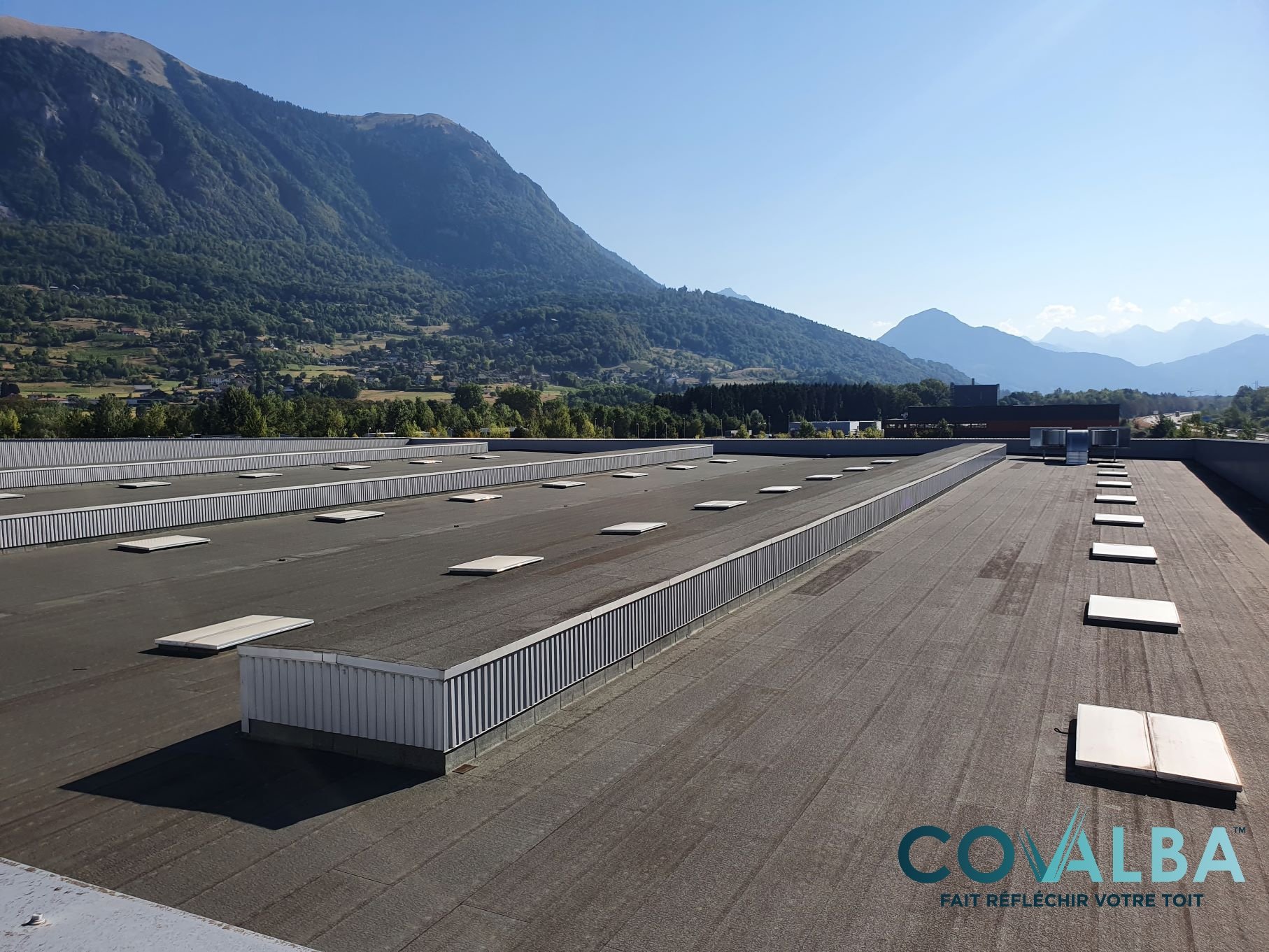Roof waterproofing is essential for all types of building. Both professionals and private individuals are concerned by this issue. This is all the more important in the case of flat roofs. Flat roofs can easily become dangerous if not properly sealed. In this case, it's vital to undertake waterproofing work on the flat roof. With prices per square metre (m²) varying greatly from one method to another, it can be difficult to estimate the overall cost of the operation. In this article, Covalba presents the different waterproofing methods and their associated costs.

What is the average price per m² for waterproofing a flat roof?
Many buildings in France today have flat roofs. From commercial premises to homes and public buildings, the number of such structures is growing all the time. Faced with this growing demand, professionals have adapted, and today it's easy to find a wide range of waterproofing solutions for flat roofs.
However, while the choice of roof decking is wide, it should be noted that the associated costs can differ widely. In France, the average price per square meter for roof-terrace waterproofing is around fifty euros.
💡 S ee all our tips on roof waterproofing
How much do different waterproofing methods cost?
Over and above the average price for waterproofing a flat roof, the cost of each method can be studied in order to select the most advantageous. Before going into detail about prices, it may be useful to understand how to waterproof a flat roof using the different techniques available. There are currently four main waterproofing solutions for flat roofs:
- Bituminous membranes (SBS) ;
- EPDM membranes;
- PVC membranes;
- Liquid Waterproofing Systems (SEL).
Bituminous membranes
Bituminous membranes are the most widely used waterproofing solution in France. They account for over two-thirds of the market in mainland France. Derived directly from the oil industry, bituminous roofing membranes for flat roofs have the great advantage of being particularly economical. They can be installed at an average cost per square meter of between €30 and €60.
Although affordable, bituminous membranes are not without their faults. The main criterion is ecological: derived from the petroleum industry, bitumen is not eco-responsible.
EPDM membranes
EPDM membranes have become increasingly popular in recent years. Thanks to its excellent longevity and satisfactory thermal resistance, EPDM is the material of choice for roof waterproofing. On the other hand, its cost per square meter is high, with an average cost of between €60 and €90, depending on where you live.

PVC membranes
PVC is a material used less and less in waterproofing solutions. Indeed, PVC membranes are tending to be replaced by EPDM membranes, which offer better performance. However, you can still take advantage of this material for your roof waterproofing. PVC roofs are highly resistant to thermal differences. This means they are equally well suited to sunny regions and those subject to inclement weather. The average cost of such a solution is between €40 and €60 per square meter.
Liquid Waterproofing Systems
Liquid Waterproofing Systems (or SEL) account for a tiny share of the French market. Yet this solution can be particularly practical if you plan to use your flat roof on a daily basis. This is because Liquid Waterproofing Systems can withstand heavy traffic. The average cost of this type of insulation is between €40 and €70 per square meter.
How can I reduce the cost of the work?
Although the cost of waterproofing a flat roof is considerable, it is essential to ensure the building's long-term survival. However, if you don't want to be overly affected by the cost of the work, you can mitigate these expenses. This can be done in two ways. Firstly, you can take advantage of government grants and subsidies. The assistance available varies for professionals and private individuals.
At the same time, you can take advantage of waterproofing to optimize your building's thermal performance. For flat roofs, you can opt for a cool roof. This solution involves painting the selected membrane with a white, heat-resistant paint. With a reflective function, this paint can then limit the roof's surface temperature. Within the building, this translates into lower temperatures in summer. The cost of sealing the roof can then be recouped in monthly air-conditioning savings.

To find out more :